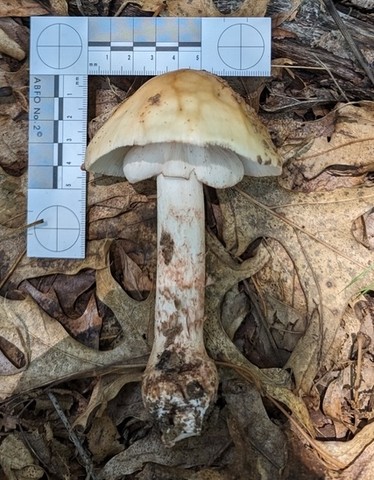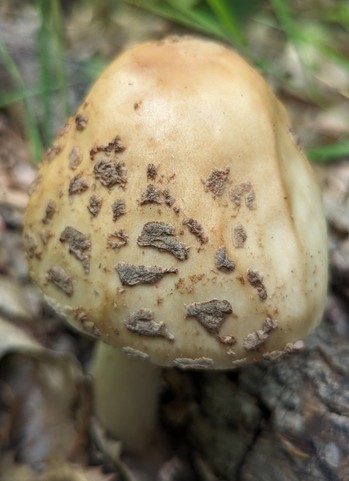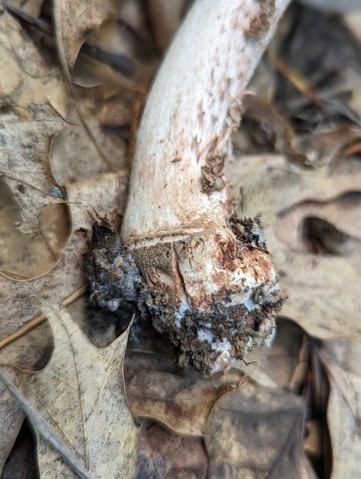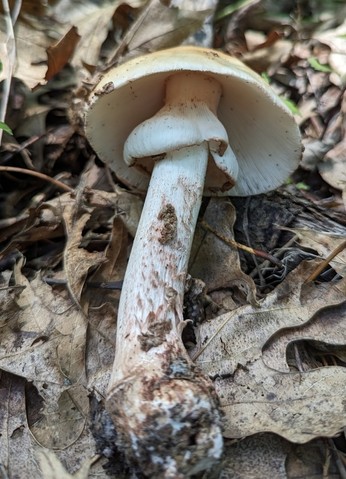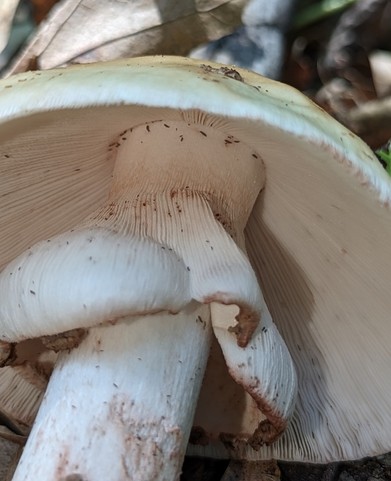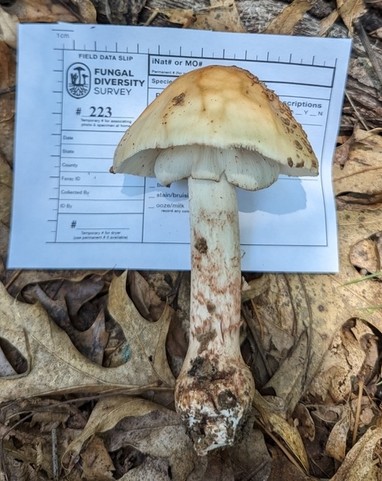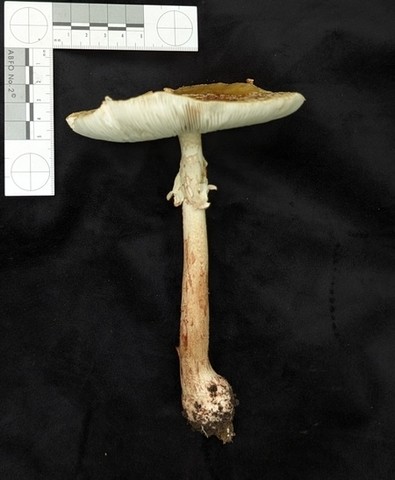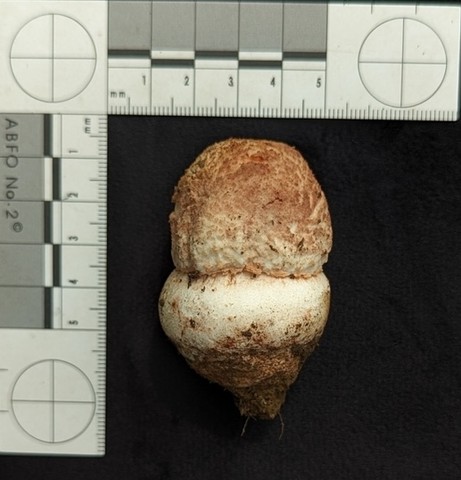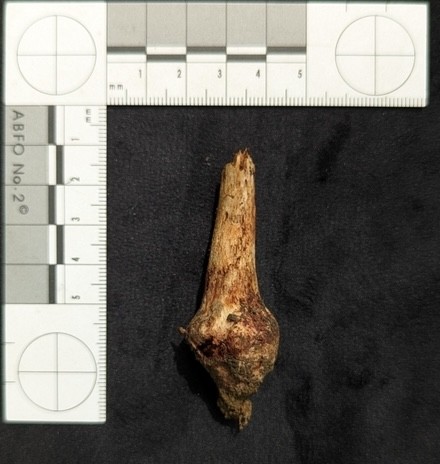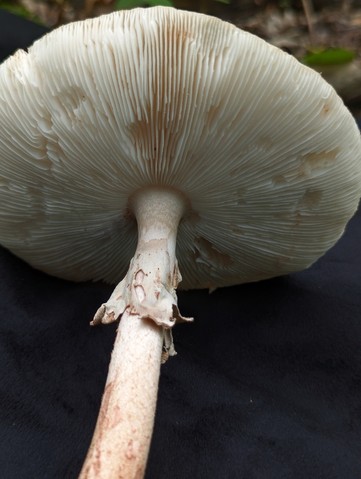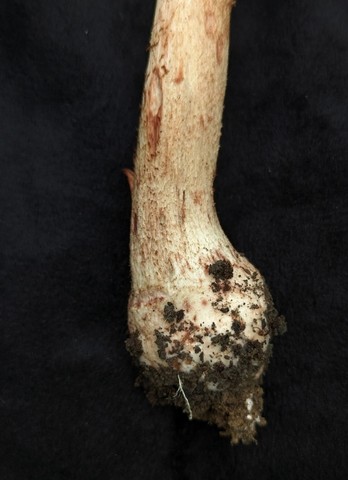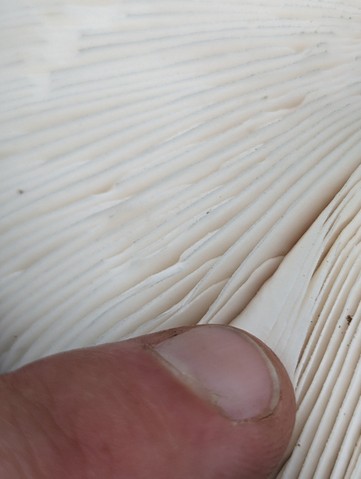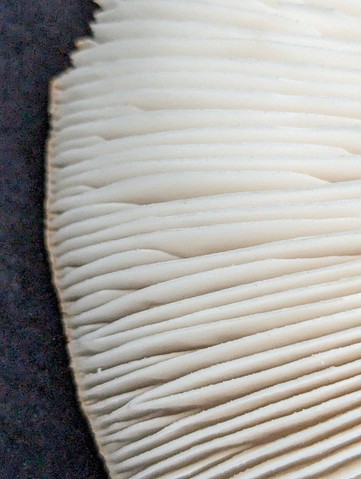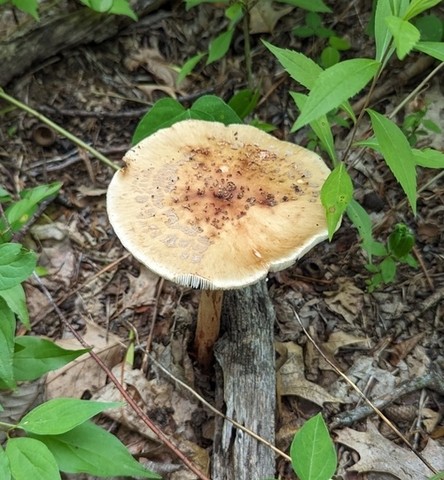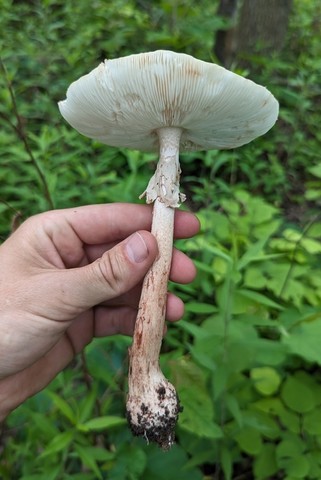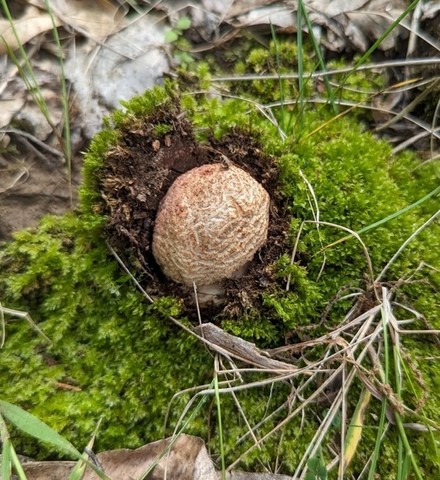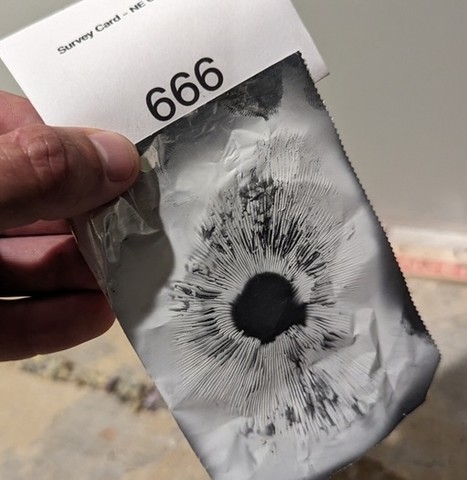American Blusher
Amanita amerirubescens
Life > Fungi > Basidiomycota > Agaricomycotina > Agaricomycetes > Agaricomycetidae > Agaricales > Pluteineae > Amanitaceae > Amanita > Amanitina > Validae
Description
The American Blusher (Amanita amerirubescens) is a mycorrhizal mushroom that can be found in Oak and Pine-dominated woods mostly during the summer but also into early fall. It is a gilled mushroom that can be found in the soil, has large membranous skirt, and has a bulbous base without a volva. It stains red and has a white spore print.
This species hasn't been described formally in North America yet, and is under the provisional name Amanita "rubescens-02".
Observations
July 23rd, 2023 Indian Cave State Park
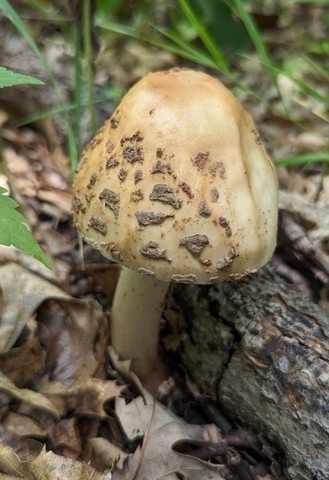
#223
- Growing solitarily in open mixed oak/hikcory woodland, near edge.
- Nearby Trees: Black Oak, Bur Oak, Eastern Red Cedar, American Hackberry, Ash and Black Walnut.
- Cap tan with reddish hues, also adorned with tan universal veil remnants (easily removeable).
- Lamellae white and crowded, staining red.
- Margin staining red (lightly).
- Stipe thick, with prominent annulus, bruising reddish from top 1/4 down to base.
- Volva tan concentric bands on a swollen base, with white basal mycelium.
Smell: not distinctive. Taste: pleasant, almost nutty.
GTCGTAACAAGGTTTCCGTAGGTGAACCTGCGGAAGGATCATTACTGAACGAAATGGGTGGCAAGGCTGTCGCTGGCTCTAATGAGCATGTGCACGCCTTTTGCTGCTTGCTTCATTCTCTTTTCCACCTGTGCACTCTTTGTAGACACTCGGGATGGGGAGAGAGTTGGCATCGAATGTTGGCCTCTCTTGATATTAAAAAGTCTGGGGTGTCTATGTGTTTTTTCACATACACAATTTGAATGTCTATAGAATGAAATTGTAGGCTTTTGTCAGCCTTTTAAATGATAAAATACAACTTTCAACAACGGATCTCTTGGCTCTCGCATCGATGAAGAACGCAGCGAAATGCGATAAGTAATGTGAATTGCAGAATTCAGTGAATCATCGAATCTTTGAACGCATCTTGCGCTCCTTGGTATTCCGAGGAGCATGCCTGTTTGAGTGTCATTAAATATCTCAAAAAACTTGTGCTTTTTTGGCATGGGATTTTTGGACATTGGGAGTTGCCGGCTGCTGATAAAGTGGTGGGCTCTTCTGAAAAGCATTAGTTGAGGAGCTTTGCACTCTATTGGTGTGATAGACTATCTATGCCAGGAGATGCTTCATGATCCTCTGCTGTCTAACTGTCTTTATCAGACAATATGTGATAAACTTGACCTCAAATCAGGTAGGACTACCCGCTGAACTTView MycoMap DNA Results
June 2nd, 2024 Indian Cave State Park
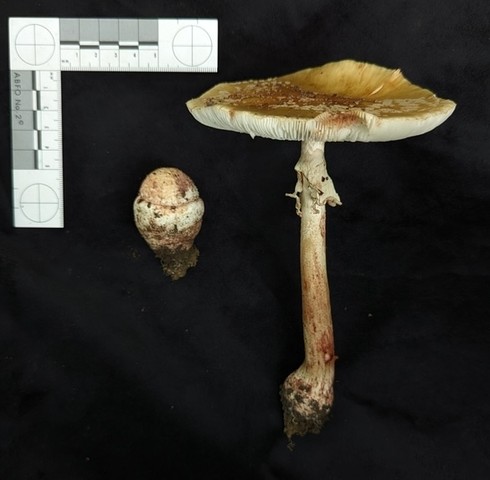
666
- Growing from soil in mixed oak/hickory woodland.
- Nearby Trees: Eastern Red Cedar, Black Walnut, Eastern Cottonwood, Ash, Black Oak, Eastern Red Bud, White Mulberry, and American Hophornbeam.
- Spore Print: white
References
Tulloss RE. 2024. Amanita amerirubescens. in Tulloss RE, Yang ZL, eds. Amanitaceae studies. [ http://www.amanitaceae.org?Amanita+amerirubescens ]. accessed August 13, 2024.
Created December 15, 2025 at 10:41 AM
